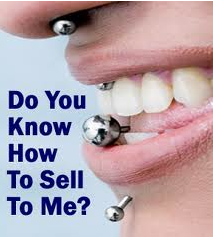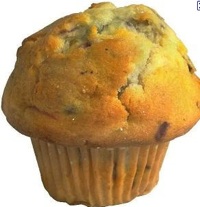Articles and News
EXCLUSIVE! HOW TO GET THE BUY FROM GEN-Y | April 27, 2011 (0 comments)

Merrick, NY—Luxury jewelers should feel bullish on the future right now. The economy is in recovery, customers are shopping again, and Gen-Y, a population cohort bigger than the free-spending Boomers, is entering the marriage market.
But jewelers are concerned that Gen-Y does not seem to care about fine jewelry. They do care significantly about bridal jewelry—thankfully—but otherwise they seem just as happy wearing brass and feathers as diamonds and pearls. Indeed, they’re happier with the feathers, which they probably bought to go with one particular outfit and which will win accolades for funky design. It’s meant for the moment, not forever. It might not even make it beyond the night it’s worn, but that’s ok.
Jessica Maxwell, a 24-year-old associate at Cellini Design Jewelers in West Haven, CT, acknowledges the mindset of her peers. Having been exposed to fine jewelry because of her career, she views it differently than her friends, but she understands their attitude.
“My generation doesn’t necessarily care about long-term quality, they care about short-term fashion.” And yes, they do buy jewelry to go with a specific outfit and they might never wear it again because it was meant only for that outfit—which also may never be worn again, say Kit Yarrow and Jayne O’Donnell, authors of Gen Buy: How Tweens, Teens, and Twenty-Somethings Are Revolutionizing Retail. Unlike previous generations who bought a nice dress for multiple occasions, it’s not at all uncommon for young Gen-Y women to buy cheap party dresses that they fully intend to discard after a rowdy night of spilled drinks.

Please, learn to love jewelry! Jewelers need Millennials to want fine jewelry. What they don’t know—and what keeps many up at night—is how to make that happen.
“That’s the $10 million question,” says Lou DeSimone, owner of Cellini Design Jewelers. “I wish I had the answers or the insight, but they just don’t want to spend money on fine jewelry.” Even his own niece, he says, would rather wear huge CZ’s in her ears than quality diamonds much smaller. She is about to graduate from college and her parents want to give her jewelry to mark the occasion. DeSimone suggested diamond stud earrings. But the huge CZ studs she owns are more than her parents are ready to replicate in diamond—and DeSimone says she doesn’t want to trade those for the much smaller but real thing.
“They just want big,” confirms Maxwell of her peers’ requirements for jewelry. Or, if it’s not big, it has to be branded. Failing either of those qualities (or sometimes even including them), it’s got to be inexpensive.
But “inexpensive” is relative. Behavioral economist Dan Ariely, author of Predictably Irrational, says price only has meaning within a frame of reference. Something may seem reasonable until it’s compared with something else—then suddenly it’s outrageously expensive or, conversely, something that seems like a bargain may suddenly seem outré.
Maxwell concurs. “I think fashion jewelry can be really expensive. You go to J. Crew or Banana Republic and it’s $80 or $90. I think that’s very expensive for costume jewelry that’s not real. But then you come in here and our fashion jewelry is $300 or $400, and suddenly $80 doesn’t seem that expensive.”
Much of Cellini’s fashion jewelry is sterling silver and many pieces have 18k gold or gem accents, so a price tag of a few hundred dollars certainly is justified. But when compared to low-end fast fashion or accessories stores like Claire’s or Forever 21, J. Crew feels expensive—and Cellini, out of reach.
Bridal is big. Not all Millennials want cheap disposable fashion. There are Millennials who are quality driven, and bridal jewelry is one area where the cohort as a whole does care and is willing to spend money for it. Industry analyst Ken Gassman says the average diamond engagement ring ticket in 2009 was $3,150 and rose to perhaps $3,350 in 2010. But at prestige jewelry stores, that figure is closer to $7,000--more than double the industry average.
Mark Moeller of Minneapolis-based R.F. Moeller Jeweler, says it’s like the old Sam Walton saying, “25% of people buy on price. 25% buy on value and quality. It’s the other 50% that’s the battle.” Price customers aren’t his customers; he’s already got the quality customer, but yes, the remaining 50% keeps him up at night.
His employees spend “an inordinate amount of time explaining to the customer why it’s important to buy quality,” he says. “It’s like Glenn Rothman [CEO of Hearts on Fire] says, ‘You can’t tell people once, you can’t tell people twice. You have to tell them 180 times.’”
“A lot of my generation are really surprised by how much it [bridal] costs,” says Maxwell. She says there are two ends of the spectrum: those who want the best, and those who just want—you guessed it—big. As one young consumer told authors Yarrow and O’Donnell, “Once it [a diamond] was a symbol of love, now it just has to be the size of a muffin.”
For the “big as a muffin” customer, invisible settings, clusters, and other styles that give the look of a carat for $1,500 are trending up. The look is more important than one single stone that will appreciate in value.

The next generation's engagement ring?
“My generation doesn’t appreciate anything!” she jokes. But one thing Millennials do get is the power of branding. Maxwell identifies name-driven as another group among bridal customers. These, she says, don’t care how big it is or even what it looks like, as long as it has the name. Brands are everywhere, she says, and they’re very, very important to Millennials.
It’s not always junk. Once Millennials are in the store, says Moeller, it’s usually not hard to sell quality because it’s an ongoing message they've accepted. “We’ve been in business 60 years, so if they’re here it’s because they’ve had some experience or awareness that drove them in the door,” he says. Maybe they bought a junky $99 tennis bracelet that fell apart, but they liked the idea of the bracelet so now they’re ready to buy a good one.
They get it about quality--if they want fine jewelry in the first place. That's what worries Moeller. But how do you make a customer want something they just don’t deem important? All the social media, snazzy apps, and mobile marketing messages in the world may not matter a jot if the customer really wants a silver charm on a leather string more than a diamond bracelet.
“I wish I knew,” Moeller says. “I just don’t think it’s as important for Millennials to own a fine piece of jewelry as it was for the Boomers,” he says. But, he adds, they’ve also not grown into that stage of life.
“I hope they mature into it!” says DeSimone fervently. “Maybe they’re just not as exposed to it as our generation was?” he muses. Or, he adds, the rising prices for diamonds and gold means younger consumers (as well as many older consumers) just can’t afford it. “We used to be 80% 18 karat [sales]. Now it’s 60-70% silver.”
He's hopeful, though. He has Millennial-age customers already bringing in inherited pieces for restyling, to have it made into something they do like and will wear as opposed to something they’ll never put on.
Moeller also gets Millennials bringing in old gold they’ve inherited. “We don’t advertise that we buy gold. Being a luxury store, I don’t want screaming banners saying ‘cash for gold’ but we do buy. We offer two prices, the cash price and the trade-in price. Many of these customers never thought of trading it in, but when we suggest it they trade for something they will wear and still remember Mom by.”
This may be the crack that opens the floodgates. Millennials are as moved by emotion and sentiment as anyone, and in fact are more family-oriented than previous generations. So the fact that something was Mom’s or Grandma’s does matter, and good old emotion is the single best time-honored trigger for selling jewelry. Even the "big as a muffin" ring still is about engagement, not breakfast.
Jessica Maxwell’s perspective also should give jewelers hope. Don’t discount age or the economy, she says. The economy has something to do with it now, but as Millennials get older they will start to appreciate quality, she believes.
“It’s changing. People are starting to value what they spend their money on, rather than just spending it. They’re buying houses, condos, new cars, and they’re really starting to think about the value of what they’re buying.”
After all, these customers are young. The eldest wave—depending on which demographer one asks—are at most 33 or as young as 26, so they’re far from their peak earning years. Remember, too, that nobody ever would have thought the “peace and free love” Woodstock-era Boomers would morph into acquisitive hard-driving Yuppies. Who knows how the Millennials may change as they progress into different life stages?
Still, Maxwell says, “We’re always trying to find a way to get what we want without paying what we have to.”







